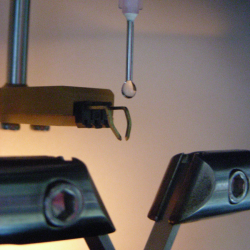
NewsInformation Center
what is Tracking Testing ?
2019/11/07
Tracking is a surface phenomena on an insulating material. When you have two conducting terminals or tracks at a high voltage (higher than 100 VAC) separated by an insulator, a combination of environmental factors such as dust, moisture and thermal cycling could cause minute leakage currents to flow on the surface between the conductors.


Over time, the deposits carbonize and the surface current increases. Eventually, a carbon track forms over the surface of the insulator making it conductive at a particular “tracking” voltage.
Finally, a short circuit is created between the two conductors which may also lead to fire. Worse, it’s possible that the tracking current could be lower than the rating of the protective fuse in the appliance, which will prevent the electrical supply from being cut off, creating a fire hazard.
Tracking can be avoided by using the right kind of insulating materials and adequate creepage and clearance distances. One of the reasons for adding a slot between adjacent high voltage terminations or tracks on a PCB is to take care of tracking.
Tracking Testing is used for research department, production department and QC department.
Proof Tracking Index (PTI): the voltage value of the material subjected to 50 drops of electrolyte without electrical tracking, the unit is volt.
Comparative Tracking Index (CTI): The highest voltage value at which the surface of the material can withstand 50 drops of electrolyte without forming electrical tracking, the unit is volt.
Previous: Way To Test Colorfastness
N e x t : The wear resistance of textiles



